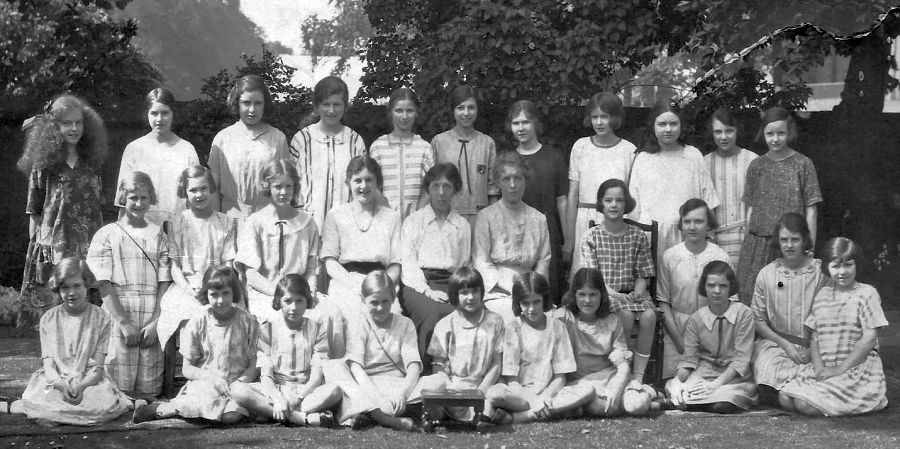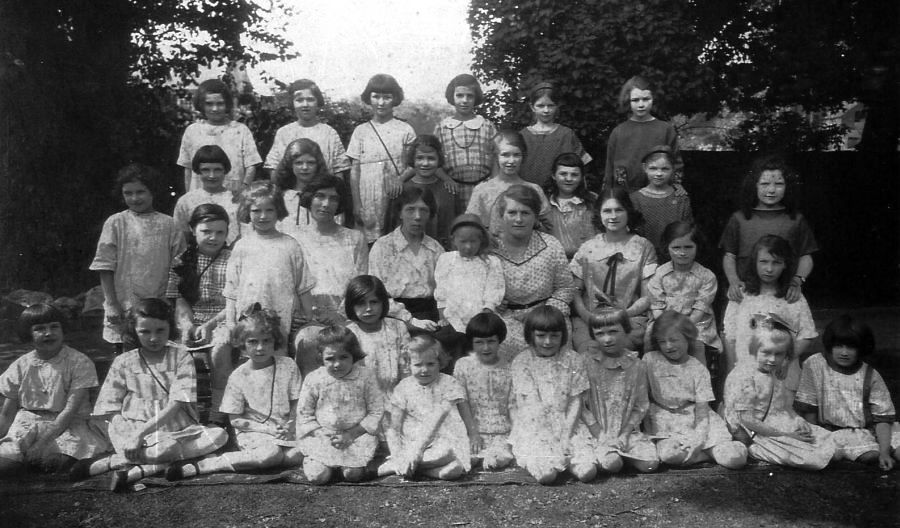Miss Horner's School, West End, Beeston - about 1923-25
|
|
|
|
|
The value and importance of a good education was recognised and appreciated through three generations of the Horner family and, on Miss Horner's mother's side, within the Winter family. It appears that all of the children received an excellent education and, significantly. many of the daughters remained unmarried and dedicated much - sometimes all - of their lives to educating others. Miss Horner - Amy Eleanor - was born on 21 February 1879, the youngest of seven children, including five daughters, of William Frederick Horner and his wife Charlotte (née Winter). William Frederick was a successful hosier who had continued his father's - William (1807-1861) - business when the latter died prematurely, aged 54. His father had ensured that his family received a first-rate education and. as a result William Frederick had attended Nottingham High School - something of a tradition amongst hosiers' sons at that time. William Frederick continued that tradition and as a result, his children received a similar education. For his daughters, including Amy, this meant attendance at Nottingham High School for Girls. This determination to ensure an excellent education for the children was continued by their mother after their father's early death in 1886, aged only 45, when Amy was aged 6. This appears to have been made possible by the then substantial estate left by their father - over £10,800 which would be worth something approaching a million today - in addition to the support that would have been available from the Winter family. Her father, Thomas Winter (b. c1799) was an architect, surveyor and auctioneer who had also died at relatively young age in 1857. His widow Lucy (née Parker, b. c1801) had therefore been left in a similar position to that, as we have seen, was to later befall her daughter, Charlotte Horner - and it is clear that she had similarly continued, up to her death in 1882, to ensure that her family received an excellent education and supported those of her daughters who made education a career. Within these two families we can trace at least seven daughters who made education a part or the whole of their career, mostly remaining unmarried. Thomas & Lucy Winter had eight children of which three of their five daughters were teachers :Amy Eleanor Horner, as we have seen, first started teaching at home in Nottingham, preparing students for entrance examinations alongside three of her sisters. She was then only 17 but probably had the help and support of her aunt, Priscilla Winter, who was then in the process of retiring. It is possible that she and her sisters took over from her.Eleanor Winter (1828-1895) - was a governess prior to her marriage, in 1861, to widower, Thomas Sharp (1818-1907), a successful Nottingham tailor and woolen draperWilliam Frederick & Charlotte Horner had seven children of which four of their five daughters were teachers : The school at West End House had been founded by Elizabeth Henshall, a native of Staffordshire who had worked as a governess before she moved to Beeston, before 1871, with her mother, a widow of independent means. She started teaching from their home in Middle Street but, by 1881, she had moved to West End House where she had set up a school with pupils that included a few boarders. Following her death in 1898, the school was continued for a few years by Maud Mary Willett from Nantwich, Cheshire. In 1903, Miss Horner was able to take over the school and begin to mould it to her high standards and to develop it to the level it eventually became. The school at West End House developed an excellent reputation with families in the area who could afford and were prepared to pay the fees for a private education for their children, mainly to prepare and coach them for higher education. Miss Horner's pupils regularly gained success with the External Examinations of Oxford University (similar to present-day A-Level exams) leading to scholarships for higher colleges, universities and Public Schools. Most of her pupils were day students, mostly girls but some younger boys were sometimes also taken. At its height, the number of pupils was as many as 60. She was, of course, assisted over the years by other teachers. In 1911, we find that Violet Mabel Richards, the daughter of a Beeston solicitor, was an assistant teacher at the school and, as we have already noted, she was joined by her sister Hilda Margaret Horner at some point. In June 1947, Miss Horner retired and the school was closed but she and her sister continued to live out their retirement years at West End House. Her sister died there in 1958 followed by Amy in 1973. They are buried together in Church Cemetery, Nottingham. |

